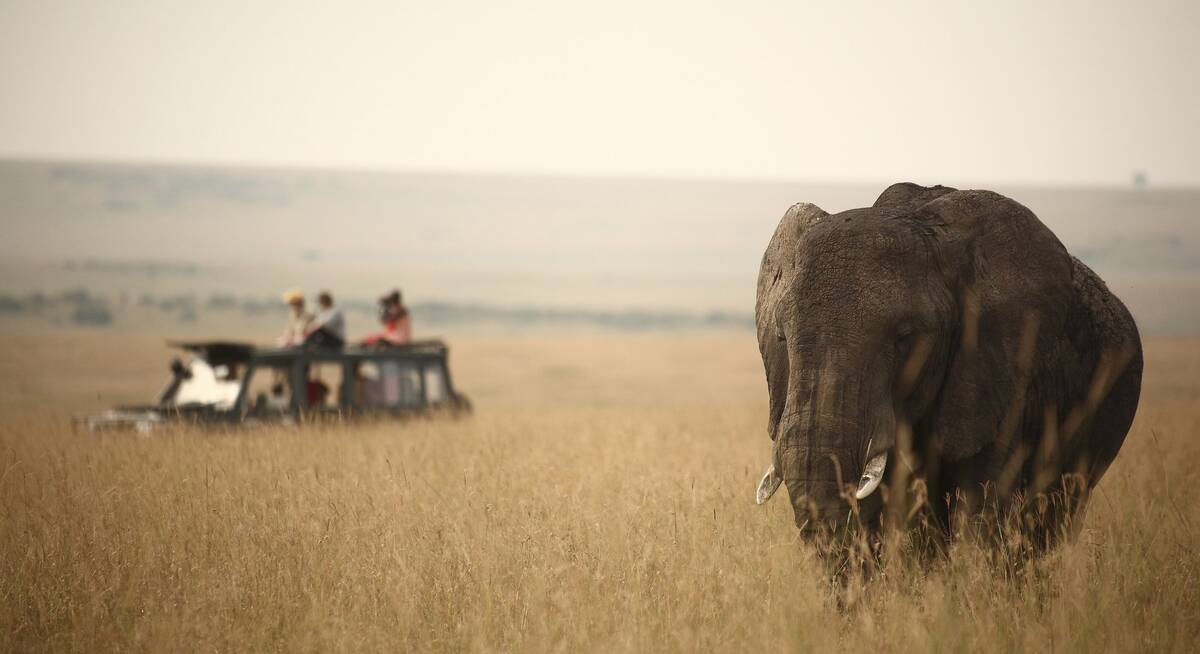Where to see Elephant in Kenya
By far the biggest of the so-called Big Five – indeed, the largest land animal on the planet – the elephant shapes the very landscape it inhabits and is a defining presence on any safari.

Quick facts about Elephant
| Scientific name: | Loxodonta africana | Habitat: | Woodland and savanna |
|---|---|---|---|
| IUCN status: | Vulnerable | Adult weight: | 2,500–6,500kg |
The elephant familiar to most safari-goers is, technically speaking, the African bush elephant, a distinct species from the smaller African forest elephant (L. cyclotis). This enormous animal is extraordinary in every respect: its tusks, enlarged front teeth, serve for feeding and fighting; its trunk, an elongated nose, can tear down a branch or pick up a bean; and its huge ears are cooling vanes that circulate the body’s blood supply.
Matriarchal herds of females and young centre on a dominant female; mature males form smaller bachelor herds. Elephants communicate over huge distances using infrasound, and co-operate in finding food and water.
They are the engineers of the landscape, creating waterholes and opening up savannahs, although confined populations can be destructive.
±40–60,000
Muscles in trunk
3.48m
Record tusk length
22 months
Gestation period
5kg+
Weight of brain
The top camps for seeing elephant in Kenya
Based on 759 reports by our travellers since May 2018, visitors at these camps in Kenya have the best chances of sighting elephant.
Best chances to see
Good chances to see
Some sightings
No sightings yet
Where to see elephants in Africa
African bush elephants occur in 37 countries, with today’s largest populations found in Tanzania, Botswana and Zimbabwe. Visit waterholes during the dry season to see the most action.
Top tips for viewing elephants
The more you watch elephants, the more enthralling they become, whether it’s an individual quietly feeding or a boisterous herd interacting at a waterhole.
Especially impressive gatherings occur in Chobe and Moremi (Botswana) and Hwange (Zimbabwe). Other excellent locations include Amboseli and Samburu (Kenya), Tarangire, Ruahaand Serengeti (Tanzania), Etosha (Namibia), and the Luangwaand Zambezi valleys (Zambia).
Elephants habituated to vehicles generally allow a close approach. However, always be alert to signs of agitation, such as a raised trunk or flapping ears. Cows with young should always be allowed plenty of space. Watching elephants from a boat offers a different perspective – as does a guided walk in elephant country, where observing their tracks, droppings and feeding signs can be as exciting as finding the animals themselves.

Our best Kenya holidays for elephant sightings
Based on our travellers' reports, these ideas for Kenya safaris are likely to give the best elephant sightings

More information about elephant in our other destinations
Click here for detailed information about elephant in other countries, including the places for sighting elephant.




















